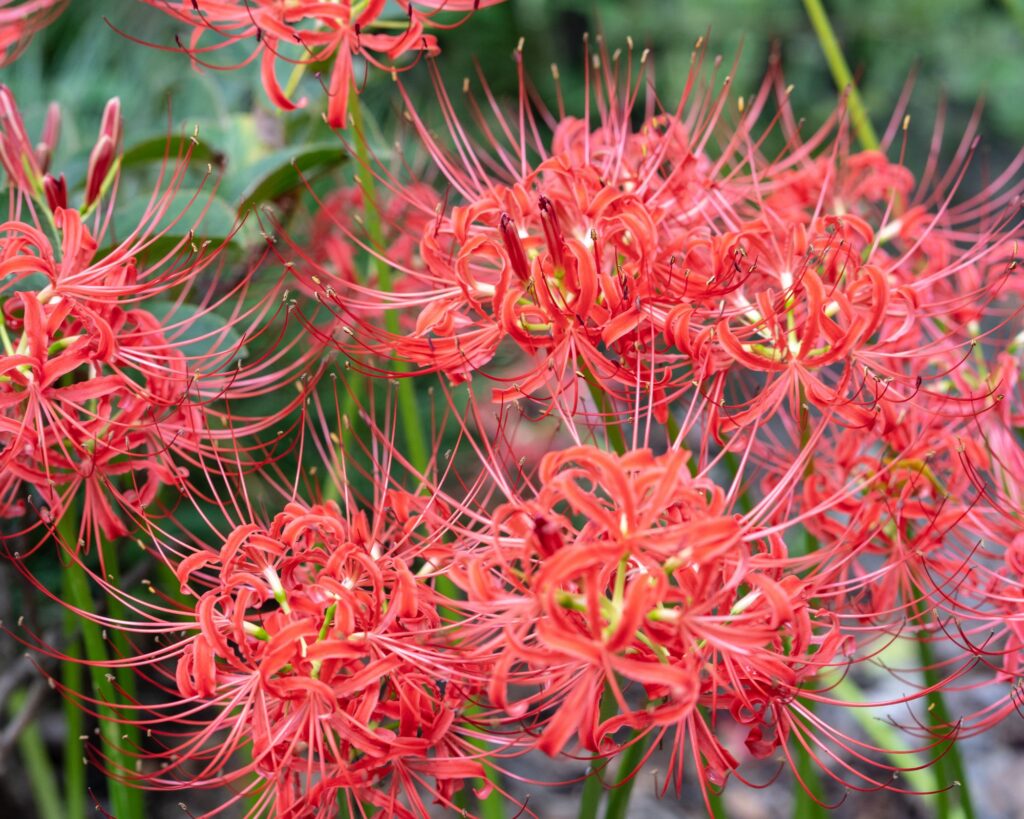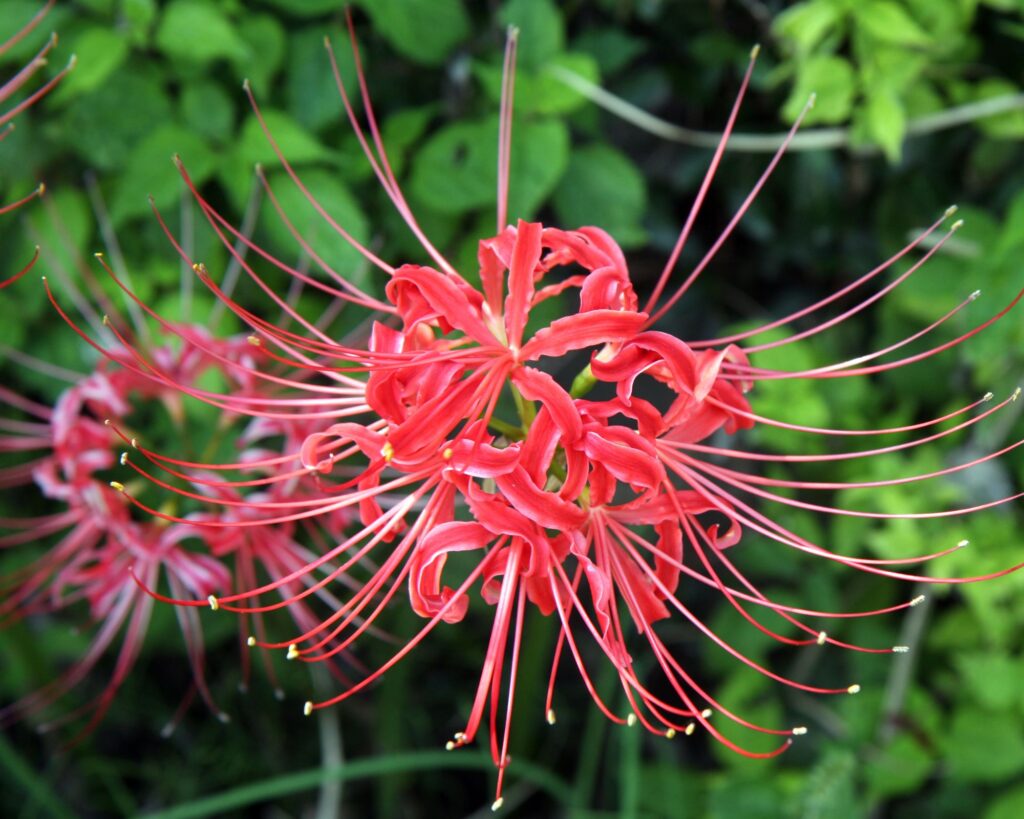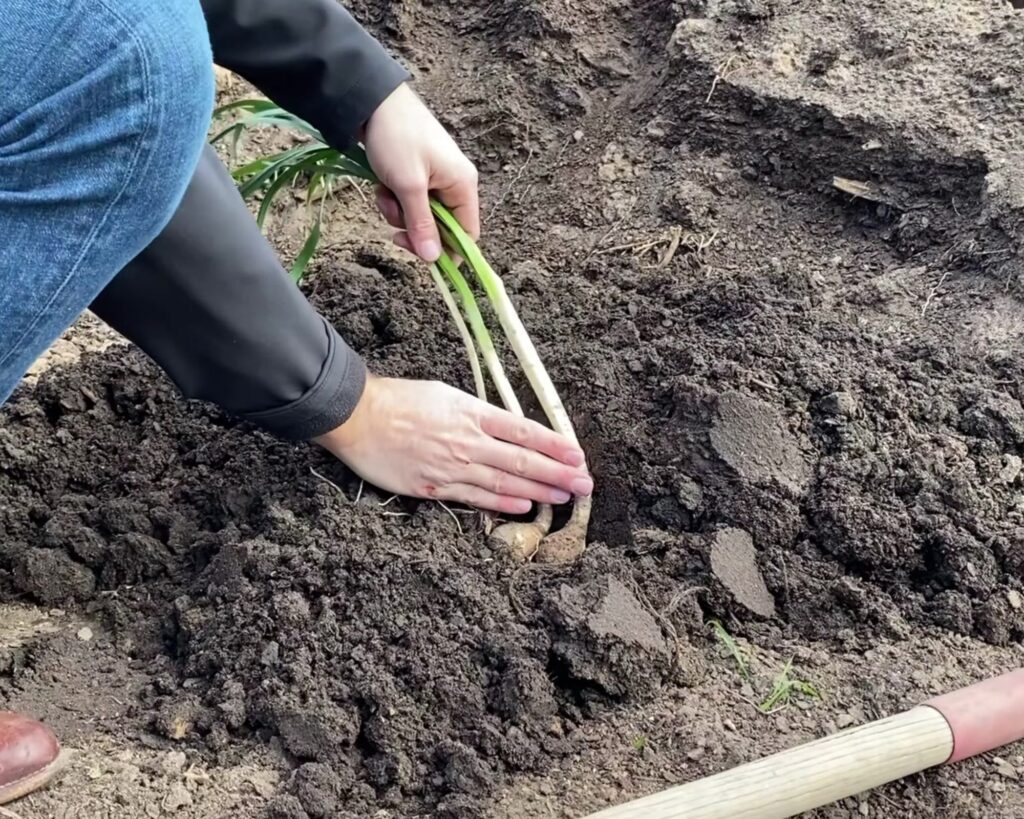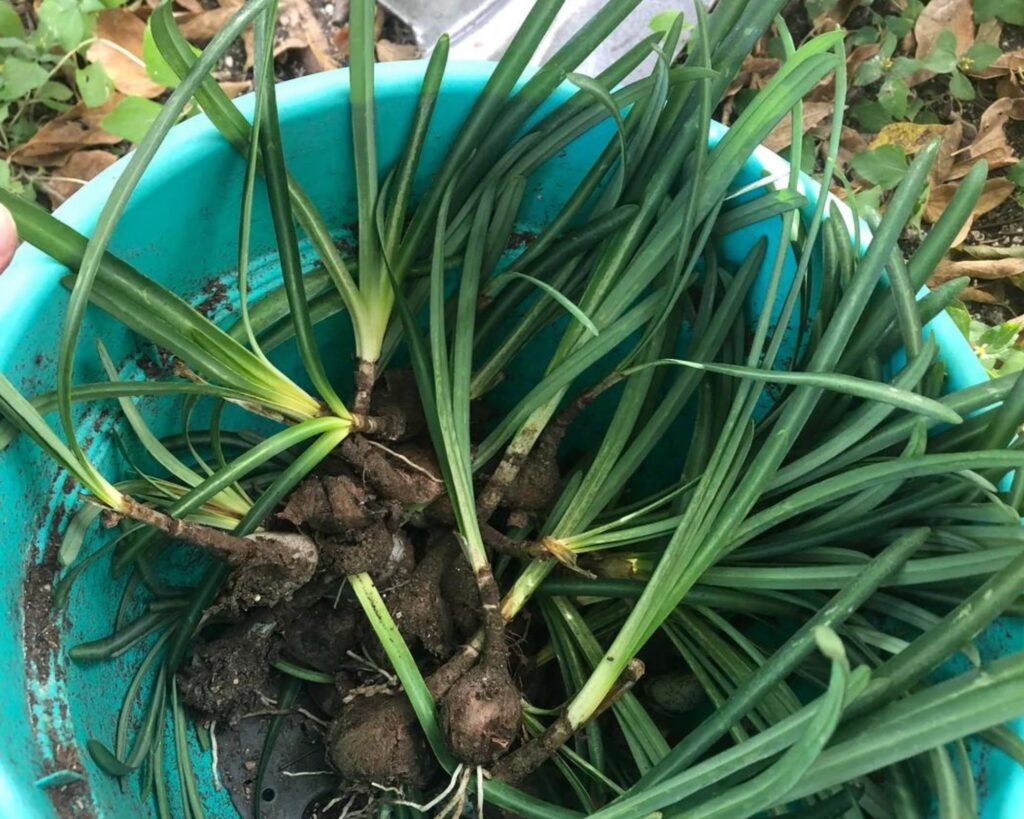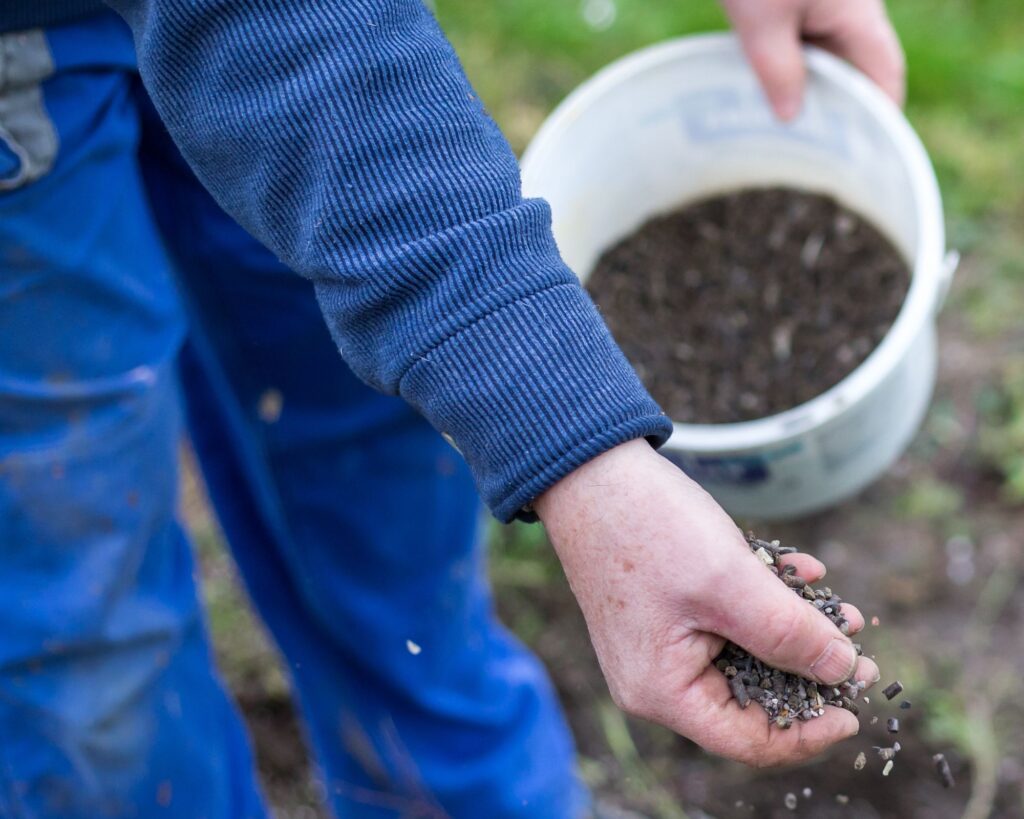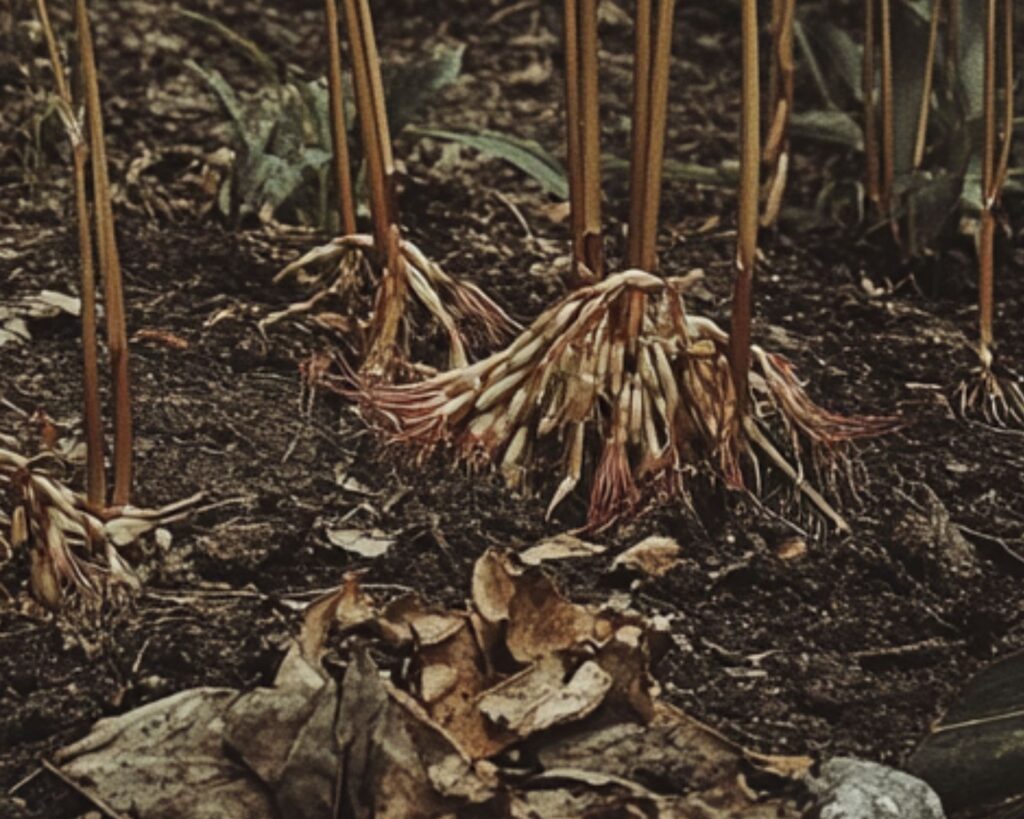Looking to add a touch of mystery and elegance to your garden? Red spider lilies are here to steal the spotlight!
With their striking red blossoms appearing to hover above slender stems, these captivating flowers demand attention and bring an enchanting vibe to any outdoor space. But the best part? They’re as easy to care for as they are beautiful.
If you’re drawn to their exotic charm, you’ll love how simple it is to grow them. With a few key steps – like planting them in well-drained soil and making sure they get plenty of sunlight – these radiant flowers will thrive with minimal effort.
Ready to learn how to make these stunning blooms a centerpiece in your garden? Keep reading for the secrets to growing a breathtaking display of red spider lilies!
Botanical Profile
Red Spider Lilies, scientifically known as Lycoris radiata, are adored for their striking, bright red blooms. Native to China and Korea, these perennials thrive in full sun to partial shade and prefer well-drained soil.
Each plant can reach a height of 12-24 inches and produces trumpet-shaped flowers with long, curling filaments resembling spider legs, which give them their unique name.
They flower in late summer to early fall, often emerging without leaves, a phenomenon that earns them the nickname “naked lilies”. After flowering, strap-like leaves appear and remain through winter. You can often find them in USDA Hardiness Zones 6-10.
These lilies are resilient and require minimal maintenance once established. Remember that while they add charm to your garden, their bulbs are toxic if ingested.
Cultural Significance
In many Asian cultures, Red Spider Lilies are laden with symbolism. In China, they are seen as symbols of the fleeting nature of life, often associated with death and the afterlife.
These lilies commonly appear in folklore and are sometimes planted in cemeteries for this reason.
In contrast, Japanese traditions link them to partings and final farewells, calling them “Higanbana”, meaning “flower of the other shore”. Despite these somber associations, the flowers are also cherished for their beauty and often used in festive decorations.
When you see these lilies, you’re glimpsing into a world rich with historical meaning and beauty.
Ideal Growing Conditions
Red Spider Lilies thrive in specific conditions, including bright light and well-draining soil. Paying attention to both climate and irrigation helps ensure their vibrant blooms and healthy growth.
These lilies prefer full sun to partial shade. If you plant them in a location that receives morning sun and afternoon shade, they will flourish beautifully. Consider your climate; they are best suited for USDA zones 6-10.
Outdoor temperatures should ideally be between 60-75°F (15-24°C). While they are quite hardy, providing a consistent climate will encourage blooming. If you reside in colder areas, consider using mulch to protect the bulbs during frosty months.
For optimal growth, use a well-draining soil mix. You can add sand or perlite to improve drainage if your garden soil is heavy or clay-based. Red Spider Lilies dislike soggy soil, so ensure proper drainage to prevent root rot.
Watering requires attention since these plants do not like to be overwatered. During the growing season, water them moderately – once a week should suffice. In their dormant period, reduce watering frequency to keep the bulbs healthy.
Be mindful not to let the soil dry out completely.
Propagation Techniques
Planting red spider lilies involves selecting the right time and location, while propagation requires understanding techniques such as division. Knowing when to transplant is crucial for their growth.
Red spider lilies can be propagated primarily through bulb division, a process that needs care and attention. You should start by gently lifting the bulbs from the soil in late autumn once the foliage begins to yellow and die back.
Separate the bulbs by carefully pulling the offset bulbs away from the main clump. Make sure each bulb has a bit of root attached, as this will ensure a successful transplantation.
Prepare a well-draining potting mix, enriched with organic matter, for planting each bulb.
You can plant the bulbs about 2-3 inches deep in the soil, spacing them several inches apart to allow for growth. Water the newly planted bulbs lightly, taking care not to overwater, as this can lead to rot.
Transplanting Tips
Transplanting red spider lilies requires attention to timing and conditions. Choose a sunny or partially shaded spot, as too much shade may hinder blooming. Early autumn is ideal for transplanting since it gives the bulbs time to establish before the colder months set in.
To begin, dig a hole deep enough to accommodate the bulb without bending its roots. Spacing is vital; place bulbs about 6-8 inches apart to encourage healthy development. Ensure that the soil is rich and well-draining.
You can add compost or a slow-release bulb fertilizer to enhance nutrient availability.
After planting, water thoroughly and maintain moderate moisture levels, allowing the soil to dry slightly between watering sessions. This approach helps prevent potential root rot and encourages robust growth.
Fertilizing and Pruning
Consistent care helps red spider lilies reach their vibrant best. Pay attention to balanced fertilization, pruning for optimal growth, and managing pests and diseases effectively.
Use a balanced fertilizer with equal parts nitrogen, phosphorus, and potassium, ideally a 10-10-10 mix. Apply this during the early spring and again in early summer. Avoid over-fertilizing, as it could damage the bulbs.
Pruning involves removing dead leaves in the fall, which encourages new growth. Cut back stems after the flowering period to about 1 inch above the soil. This process helps the plant save energy for the next blooming season.
Regular attention to these tasks ensures healthy and vibrant lilies.
Winter Care
Red spider lilies display unique growth patterns related to seasonal changes. You’ll need to pay attention to winter protection and how to manage summer dormancy.
During winter, red spider lilies require specific care to thrive in cold climates. Mulching is particularly essential. You can use straw, pine needles, or leaves to cover the soil.
This helps in retaining soil moisture and insulating against freezing temperatures.
If you live in an area with harsh winters, consider using frost blankets. They provide extra protection against frost. Keep in mind that these plants do best when they’re protected from extreme cold.
If planted in containers, move them to a sheltered location. Water sparingly, as excessive moisture can lead to rot.
Summer Dormancy
In summer, red spider lilies enter a dormancy phase, where their foliage dies back, and the plant rests. Stop watering the plant once the leaves have browned and died. This is a natural process and reduces the chance of bulb rot.
It’s crucial to refrain from disturbing the bulbs. Digging or moving them can interrupt their growth cycle. Fertilizing during this period isn’t necessary. Simply allow the plant to conserve energy for the next blooming season.
As late summer approaches, you may notice flower stalks emerging again. Once you see new growth, resume regular watering to help the bulbs prepare for blooming. Understanding this cycle enhances their blooming performance.

